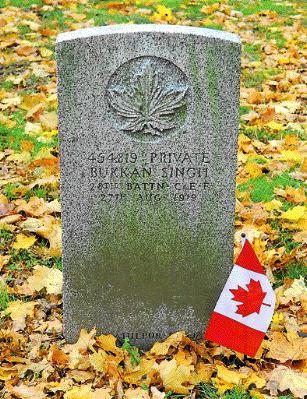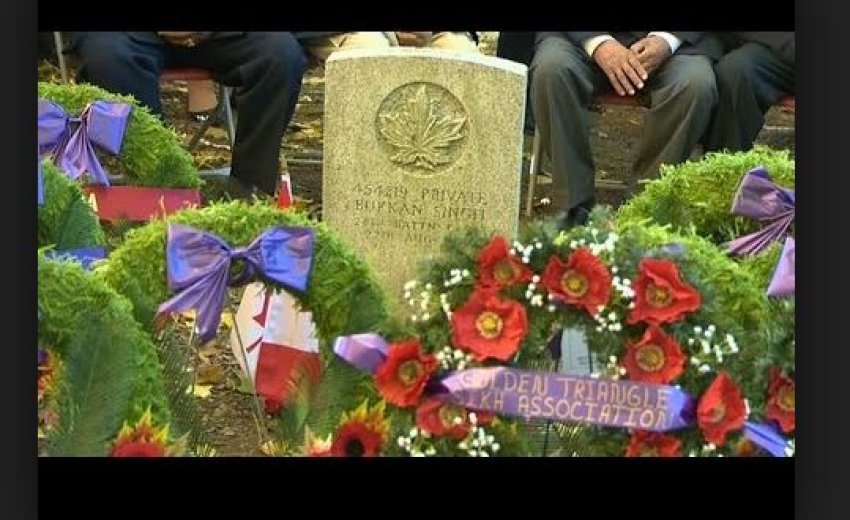In a quiet corner of a Kitchener graveyard rests the headstone of Pte. Buckam Singh, one of the first Sikhs to live in Ontario, and one of nine who served with Canadian forces in the First World War.
But it wasn't until a Toronto Sikh war historian found his Victory medal that Singh's tale was discovered.
"He's a genuine hero," said Sandeep Singh Brar, who bought the medal from a dealer in England about a year ago.
At first he thought the medal was for a soldier from India -- like others he collects.
But his stomach twisted with excitement when he read the inscription along the bottom.
Singh was part of the 20th Canadian Infantry.
The medal listed his name, rank and registration number.
"Using that, I went to Ottawa and tracked down his military records," Brar said. "And it opened up a whole can of worms."
He discovered Singh served alongside other Canadians in Flanders Fields in 1916 and was injured twice: once by shrapnel in the head, and again by a gunshot in the leg.
He was treated in the hospital run by Guelph's Lt. Col. John McCrae.
While recovering, Singh contracted tuberculosis and was sent to Freeport Hospital in Kitchener -- then run by the Canadian army. He died a year later, at the age of 25, in 1919.
"He had no family, or no one to come visit him," Brar said.
Singh was buried in Kitchener's Mount Hope Cemetery.
Brar believes his grave is the only one in Canada belonging to a Sikh-Canadian who fought in the First World War.
There is no way to know if Singh experienced racism as one of the only Sikhs in the infantry. But his records noted only "good conduct," and the fact the military noted his religion and birthplace on his gravestone is a sign of respect, Brar said.
His family -- in a remote village in the Punjab province of India -- knew nothing about his time at war. They just received a notice when he died.
But they hadn't seen Singh since he left home at 14, when he voyaged across the ocean to British Columbia. Four years later, he moved to Ontario. Brar only knows of one other Sikh who lived in the province at that time.
After living in Toronto for two years, he worked as a labourer on a farm near Pickering.
His story has become an obsession for Brar, who's an internet marketing consultant by day. He's created a website, sikhmuseum.com, to showcase his findings.
"I've spent so much time researching him, it's like chasing a shadow, or a ghost," he said. "You get glimpses of his personality."
To accomplish all he did, Singh must have been bursting with adventure, strength and intrigue, Brar said.
And he's amazed that nearly a century later, the story has come full circle, landing in the hands of the Sikh community.
"As Sikhs, we can feel we're no longer outsiders," Brar said. "We helped form Canada's history."


